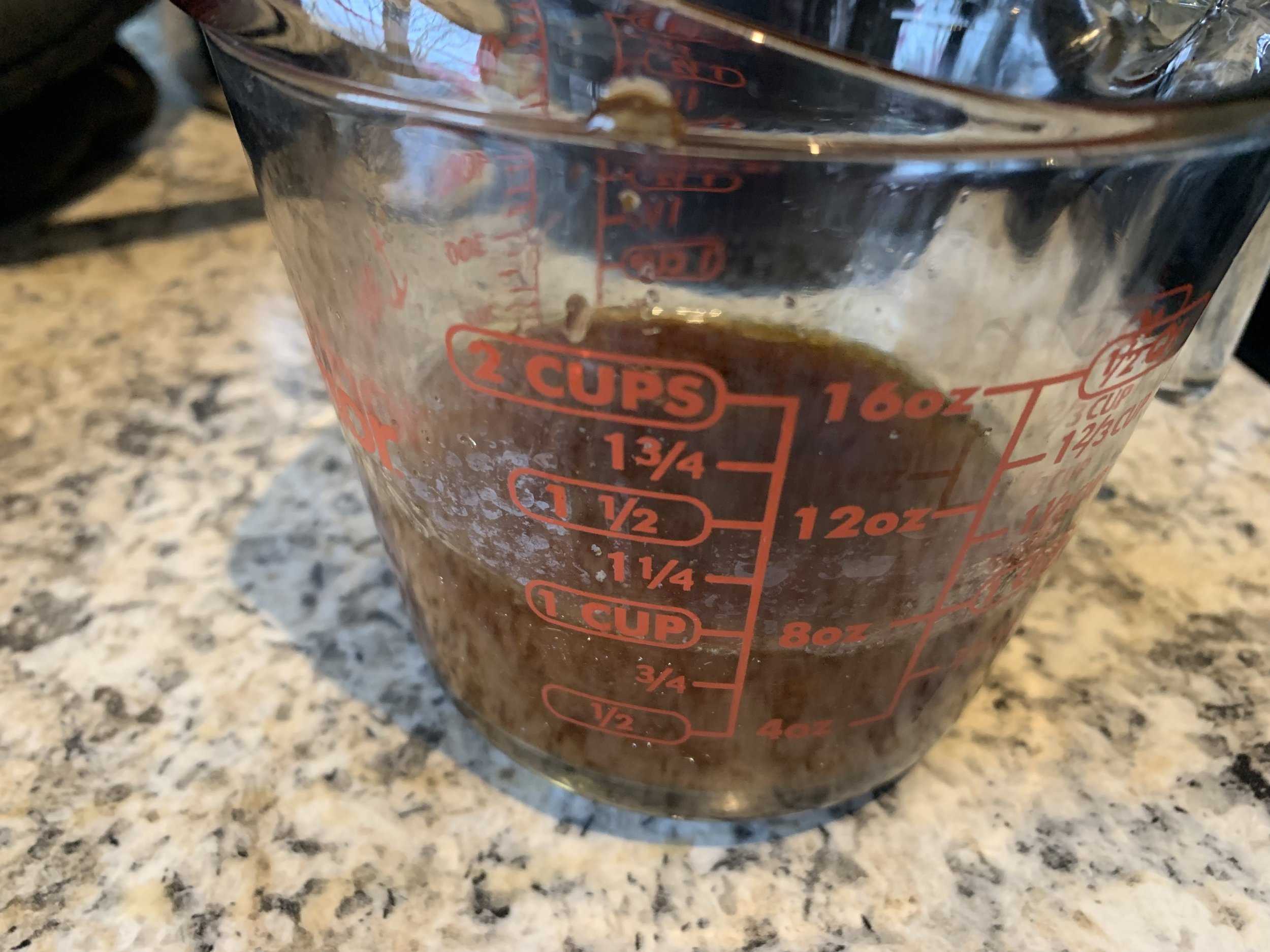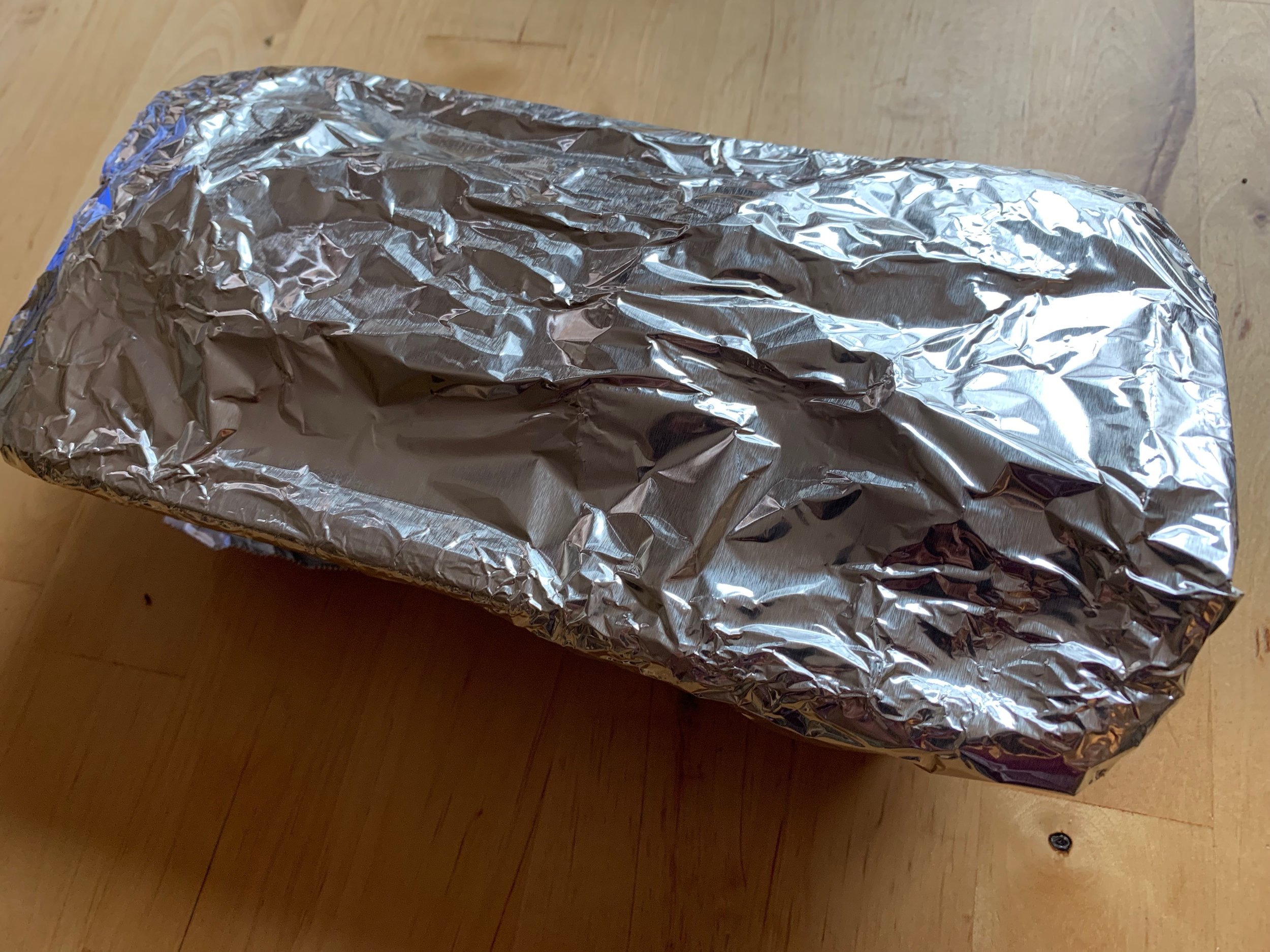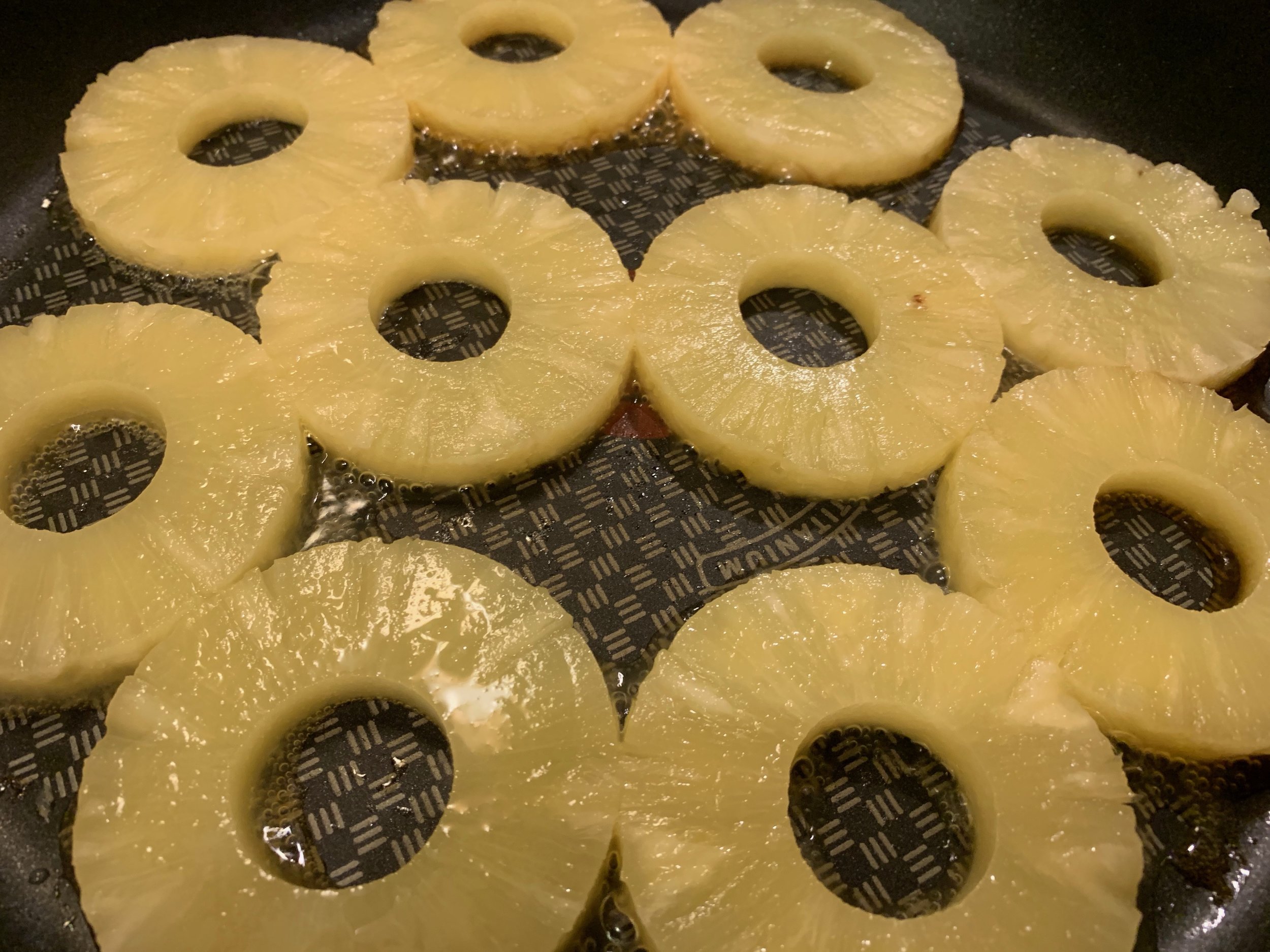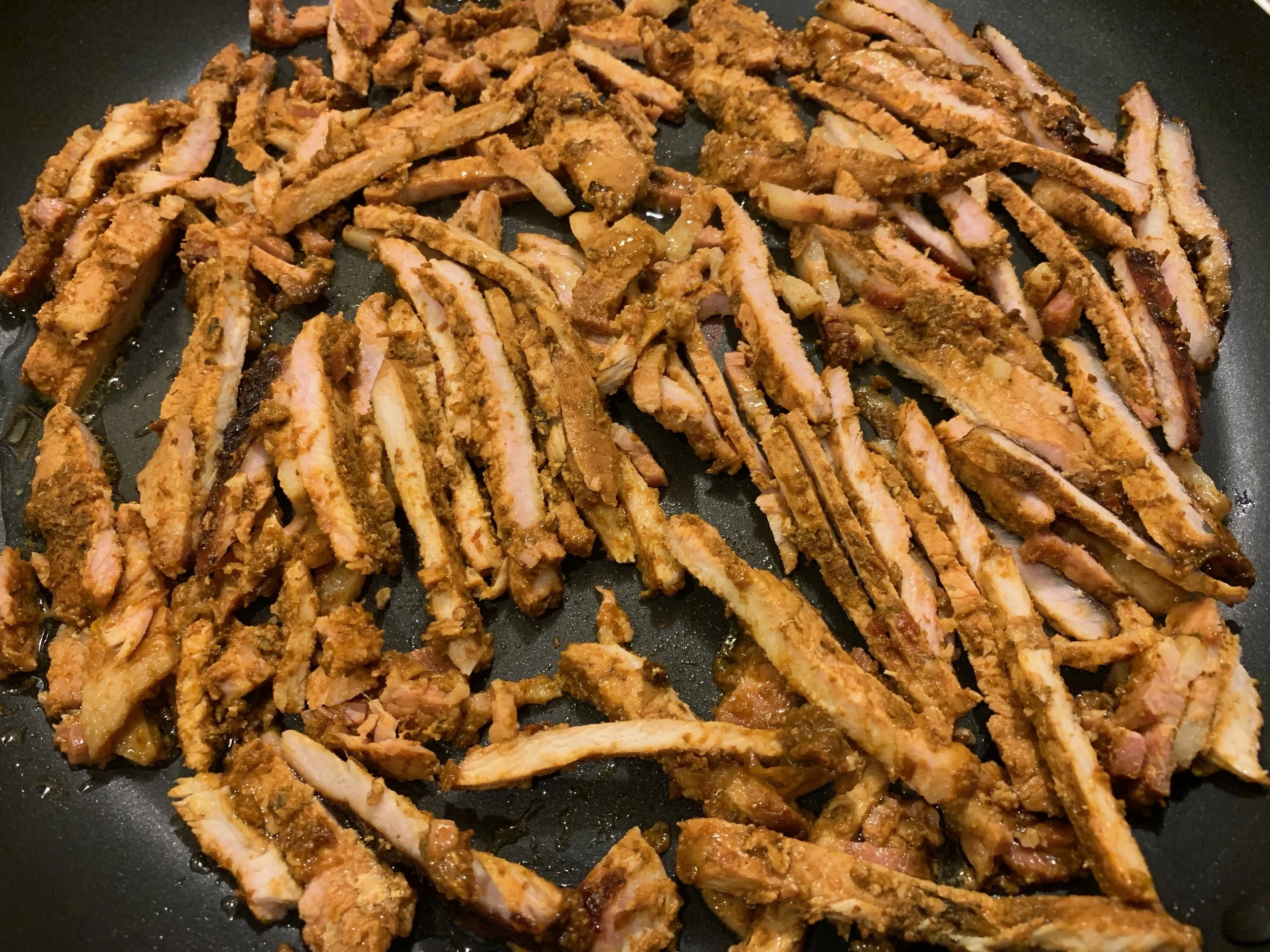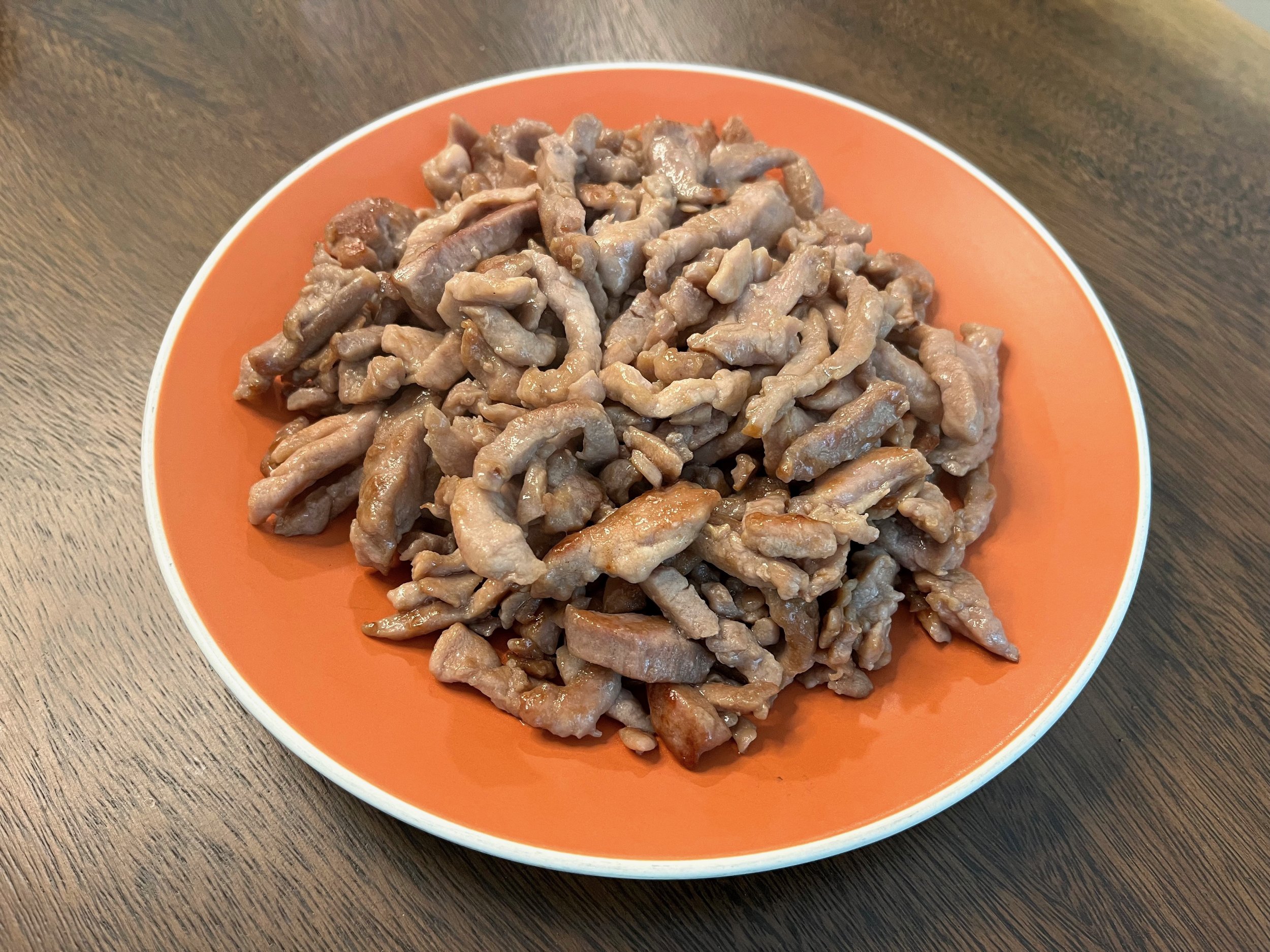Tacos al Pastor

Tacos al pastor is one of the best known taco varieties, and can be found in cities all over Mexico—tender, spiced, pork with crisp edges, served on corn tortillas with pineapple, onion, and cilantro [1]. It is also a great example of how food knows no borders.
Tacos al pastor is a dish which can trace its roots not only to Mexico, but also to the Middle East. Our story begins in late 19th century Lebanon, then a part of the Ottoman Empire. While the power of the Empire had been in decline since the Russo-Turkish War [2], Lebanon had thrived in relative peace and stability. Lebanon, and in particular the American University of Beirut, became a center of liberal political thought, advocating for reform in the Ottoman Empire. These movements came to an abrupt end with the outbreak of the Great War, in which the Ottoman Empire sided with the Central Powers—Germany and Austria-Hungary. The aftermath of the war saw the collapse of the Ottoman Empire, and the partitioning of its territory among the victorious European Allies, with Lebanon and Syria became French Protectorates.
The map upon which the Sykes-Picot Agreement was made in 1916, determining the eventual partitioning of the Ottoman Empire’s Middle Eastern holdings between France and Britain. This division of territory has had repercussions which echo violently down to the present day, precipitating conflicts in Lebanon, Syria, Israel, Palestine, Iraq, and Kuwait over the past century.
The violence and chaos of the war and subsequent dissolution resulted in an exodus of Lebanese from their homeland to countries around the world, with about a hundred thousand settling in Mexico. These immigrants brought their food with them, adapting shawarma to local ingredients. They would spit-roast lamb and serve it on tortillas, rather than pita bread, creating tacos árabes, the “Arab taco.” This method of roasting, combined with the flavors of Mexican grilled pork, soon gave rise to tacos al pastor, a dish which employs local ingredients such as chilies and pineapples.
Tacos al pastor, like its evolutionary siblings, the Turkish döner kebab, Middle Eastern schwarma, and Greek gyro, is traditionally cooked on a vertical rotisserie (called a trompo in Spanish). Layers of thinly sliced meat are skewered together, then roasted, turning slowly. Meat is shaved from the outer edge to be served. Unfortunately, most of us don’t have a vertical rotisserie at home, but with a couple of tricks, we can get pretty close to the real thing.
Ingredients
For the Pork
2 lb pork loin
½ onion, roughly chopped
5 garlic cloves
3 cloves
4 guajillo chilies
1 chipotle chili
1 tbsp oregano
1 tsp cumin
2 tbsp achiote paste
2 tsp salt
1 tbsp sugar
½ cup canned pineapple juice
¼ cup white vinegar
4 strips bacon
We begin by making the marinade for the pork, which begins with chilies. Deseed 4 dried guajillo chilies and one dried chipotle chili [3], by cutting the top off each chili and then splitting it lengthwise. A pair of scissors are the easiest tool to do this with. Boil 1 cup of water in a saucepan. When the water comes from a boil, turn off the heat, and add the dried chilies to the hot water. Cover the saucepan, and let the chilies soften for 30 minutes.
While the chilies are softening, prepare the pork loin. It is important for this to slice the pork thinly—we are looking for a thickness of ¼ of an inch, cut against the grain. You can use a mixture of shoulder and loin meat, if you wish. Place the pork pieces in a zipper storage bag, and set aside.
Roughly chop half a white onion for the marinade. Once the chilies are softened, add the rest of the marinade ingredients to the saucepan: the onion, garlic cloves, cloves, oregano, cumin, achiote paste, 2 teaspoons of salt, sugar, pineapple juice, and vinegar. Stir this mixture to combine. It is important to use canned pineapple juice in this marinade. Fresh pineapple juice contains the enzyme bromelain, a protease which will break down proteins. While bromelain is sometimes used as a meat tenderizer, having it in the mix for in a long marinade will result in mushy meat. Canned pineapple juice has been heat treated, which destroys these enzymes. This gives us the freedom to be more flexible with our marinade timeline.
With a blender or immersion blender, blend the marinade mixture for a couple of minutes, until it is smooth. Pour the marinade into the zipper bag with the pork slices and mix well, making sure all the pieces are well coated. Massage the meat to make sure that the marinade comes into contact with all of the surfaces. Seal the bag, press all of the air out of it, and place it in a secondary containment vessel. Put the pork in the refrigerator to marinade for at least 3 hours. This first phase of the marinade gives each piece of meat the opportunity to have full contact on all sides with the heavily flavored liquid.
Now it’s time to think about cooking methods. This marinated pork will cook up nicely on a grill, or in a cast iron pan over medium heat (indeed, if you are short on time, feel free to use either of these methods). However, neither of these methods delivers the same sort of temperature profile as the vertical rotisserie. Naively, one might assume that meat cooked on the trompo will be subject to continuous high, direct heat. However, this isn’t quite the case. Imagine a small volume element of meat in the rotisserie. What temperature does it experience as a function of time?
In the beginning, this element is somewhere in the center of the rotating column, subject only to indirect heat and cooking at a relatively low temperature, insulated by the meat surrounding it. While the meat on the edge is being shaved away, the meat on the inside continues to roast slowly, cooking gently. Only when the meat reaches the surface of the column is it subject to high direct heat. This phase of cooking chars the meat, adding flavor through the Maillard reaction and producing crisp, charred bits.
While most of us don’t have that fancy rotisserie at home, it is possible to approximate this temperature curve. We will use a slow roast in the oven to cook the pork with indirect heat at a low temperature, and then finish the pork in a pan over direct heat, allowing it to crisp before serving.
Another feature of rotisserie cooking we’d like to replicate is its self-basting nature—the meat cooks in its own fat and juices, improving its tenderness and juiciness. We’ll do this by cooking the meat in a loaf pan, which will catch the juices and immerse the meat in it as it cooks [4].
When the first marinade is complete, lightly grease a loaf pan, and then layer the pieces of pork into it, packing the pieces tightly together. After two layers of pork loin, add two slices of bacon. The bacon brings some smokiness to the roast, and also provides additional fat to help baste the fairly lean loin cut. Layer on two more layers of pork loin, then add the next two slices of bacon. Finally, pack the remaining pork pieces into the loaf pan. Seal the loaf pan tightly with plastic wrap and return to the refrigerator for the pork to continue marinating. This second marinate should be at least 12 hours, and can go for a couple of days at the most.
When you are ready to roast, preheat your oven to 275° F. Prepare a foil lined roasting tray, as it is likely that some fat or roasting juice will spill over the loaf pan. Remove the plastic wrap from the loaf pan, and place it onto the foil lined tray. Roast the pork for 4 hours on a middle rack in the oven.
Remove the pork from the oven, and allow the loaf of pork to cool before handling. Collect and reserve the fat and juices from the roast by pouring them out of the loaf pan, separating the fat from the roasting juices. Then wrap the loaf pan with aluminum foil, and chill the meat in the refrigerator for at least 2 hours. This chilling process will allow the meat to rest, and also let the meat set as a sort of loaf, making it much easier to slice. The meat in this form is fully cooked, and can be held like this for a couple of days. You could also chop the pork up and freeze it. Tacos are not the only application for this pork—it can also be used in burritos, tortas, or huaraches.
Ingredients
For the Tacos
12 corn tortillas
8 oz pineapple, sliced
1 onion, finely diced
1 bunch cilantro, chopped
1 lime
When you are ready to serve, it is time to prepare the accoutrements. Finely dice a white onion, rinse the chopped onions under cold water to reduce its pungency, and mix it with the chopped cilantro and the juice of half a lime to form a simple relish. Cut the rest of the lime into wedges, for serving at the table.
Next up are the pineapples. Heat a teaspoon of pork fat in a pan over high heat. Fry the pineapple slices for 2 minutes per side, until they soften and begin to color. Chop the pineapple into small pieces, and set aside.
Remove the chilled pork loaf from the pan, and make ¼ inch crosswise slices, resulting in short, narrow strips of pork. Add a tablespoon of pork fat to the same pan in which you cooked the pineapples, supplementing with vegetable oil if necessary, and heat the pan over medium heat. Add the pork pieces to the pan to form a single layer, working in batches if necessary. Allow the pork to fry without moving it for 5 minutes, to develop a crust on the bottom side of the pork. Then stir, scraping and continuing to fry for 5 more minutes.
While the pork is frying, warm the corn tortillas by heating a nonstick skillet over medium heat, then placing the tortillas in the pan for about 30 seconds per side. An alternate method of warming tortillas, particularly if they are too dry, is to cover them with a damp paper towel and microwave them for about 30 seconds. When the pork is done, remove from the pan and place in a large bowl. Pour over the reserved roasting juices, and mix. To assemble the tacos, scoop some pork and pineapples onto the tortillas, topping with the onion-cilantro relish and a squeeze of lime. Avocados and red and green salsas are also welcome additions.
Substitutions
If you can’t find dried guajillo chilies, you can substitute guajillo chili powder, or ancho or pasilla chilies. If you can’t find achiote paste [5], you can use this substitute recipe.
Pork shoulder can be used in this recipe as well, either substituting pork loin entirely or as a 50-50 mix.
Orange juice works as a substitute to pineapple juice in the marinade.
[1] Tacos al pastor translates to “tacos in the style of the shepherds.” This is likely a reference to the lamb used in this dish’s precursors.
[2] The Russo-Turkish War was fought from 1768-1774. The war, fought at a time when the other major European powers, France and Britain, were embroiled first in the Seven Years’ War and then the American War of Independence, gave Russia strategic access to the Black Sea, putting the country on the map as a European player, and greatly diminished the Ottoman’s Empire’s standing in Europe. It was this war, more than any other, that earned Empress Catherine II of Russia the appellation, “the Great.”
[3] Most chilies used in Mexican cuisine have two names—one for when they are fresh and one for when they are dried. Guajillos are dried mirasol chilies, and chipotles are dried and smoked jalapeño chilies.
[4] This technique is based on the approach used for gyros and tacos al pastor from the Food Lab’s Kenji Lopez-Alt.
[5] Achiote paste gets its distinctive red color from annatto seeds. Outside of Latin American cuisine, annatto is often used as an industrial food coloring. This use dates to as far back to the 16th century, when it was used to color Gloucester and Cheddar cheeses.
Recipe
Prep Time: 30 min Cook Time: 4 hr 30 min Total Time: 5 hr
(+24 hrs inactive) (2 days)
Difficulty: 4/5
Heat Sources: oven, 2 burners
Equipment: saucepan, blender, plastic zipper bag, loaf pan, roasting tray, pan, skillet
Servings: 12 tacos
Ingredients
For the Pork
2 lb pork loin
½ onion, roughly chopped
5 garlic cloves
3 cloves
4 guajillo chilies
1 chipotle chili
1 tbsp oregano
1 tsp cumin
2 tbsp achiote paste
2 tsp salt
1 tbsp sugar
½ cup canned pineapple juice
¼ cup white vinegar
4 strips bacon
For the Tacos
12 corn tortillas
8 oz pineapple, sliced
1 onion, finely diced
1 bunch cilantro, chopped
1 lime
Instructions
1. Bring 1 cup of water to a boil in a small saucepan. Deseed the dried guajillo and chipotle chilies, and add the chilies to the hot water. Remove from the heat, and let soak for 30 minutes.
2. Cut the pork loin against the grain into ¼ inch slices.
3. Add ½ a white onion, garlic cloves, cloves, oregano, cumin, achiote paste, salt, sugar, pineapple juice, and vinegar to the chilies and water in the saucepan. Stir to combine.
4. Blend the mixture for 1-2 minutes until smooth, forming the marinade.
5. Place the pork pieces in a zipper storage bag, and pour over the marinade. Seal the bag, massaging the meat to coat the pieces, and marinade in the refrigerator for at least 3 hours.
6. Lightly grease a loaf pan, and then lay the pork pieces tightly in the pan. For every two layers of pork loin, lay two slices of bacon. Seal tightly with plastic wrap, then continue marinating for 12-36 hours.
7. To roast, preheat your oven to 275° F. Prepare a foil lined roasting tray, remove the plastic wrap from the loaf pan, and place the pan into the tray.
8. Roast the pork for 4 hours at 275° F.
9. Remove the pork from the oven, and allow to cool. Collect and reserve the fat and juices in the roasting tray. Cover the pork in the loaf pan with aluminum foil, and chill in the refrigerator for at least 2 hours.
10. When ready to serve, finely dice a white onion (rinse pieces under cold water), chop the cilantro, mix them together, and set aside. Cut the lime into wedges.
11. Heat a teaspoon of pork fat in a pan over high heat. Fry the pineapple pieces until softened, about 2 minutes per side. Chop the pineapple into small pieces.
12. Remove the chilled pork loaf from the loaf pan, and thinly slice crosswise into individual pieces.
13. Add a tablespoon of pork fat to the pan, and fry the pork over medium heat until it begins to brown, about 15 minutes.
14. While the pork is frying, warm tortillas in a nonstick skillet over medium heat, about 30 seconds per side. An alternate method of warming tortillas, particularly if they are too dry, is to cover them with a damp paper towel and microwave them for about 30 seconds.
15. Remove the crisped pork from the pan, and mix in the roasting juices.
16. Serve the pork and pineapples on the warmed tortillas, with the onion-cilantro relish and lime wedges.














